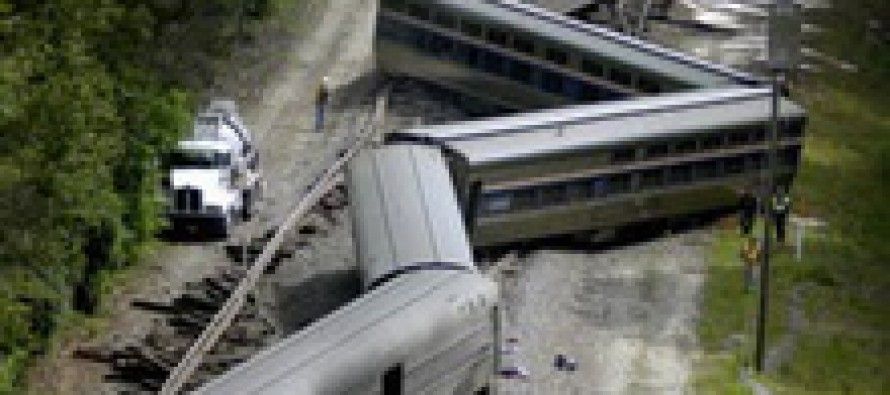LOL: Feds now tout 'higher-performing' rail, not bullet train

 The federal government has long asserted that its provision of $3 billion-plus in 2009 “stimulus” funds to California for its bullet train is strictly governed by rules that will ensure the money is properly spent on viable high-speed rail projects — ones with identified sources of future funding and necessary local and state approvals.
The federal government has long asserted that its provision of $3 billion-plus in 2009 “stimulus” funds to California for its bullet train is strictly governed by rules that will ensure the money is properly spent on viable high-speed rail projects — ones with identified sources of future funding and necessary local and state approvals.
Through a spokesman, Federal Railroad Administration chief Joseph Szabo rejected the premise of questions that I sent to him a few years back that federal rules were window-dressing for an Obama administration determined to get a CA bullet-train project well under way to create a “too big to scrap now” public works scenario.
But for all Szabo's insistence that things are being done on the up and up, it's tough not to wonder if there is a link between what happened Aug. 16 in Sacramento and what happened last week in Washington.
Feds lose state fig leaf
On Aug. 16, Superior Court Judge Michael Kenny ruled that the state of California's bullet train plan violated state law because it intended to begin construction on the first 300-mile section without having all funding ($31 billion) in hand for the entire section and because it hadn't completed environmental reviews for the entire first secton. Both were requirements established by Proposition 1A, the 2008 state ballot measure that gave $9.95 billion in bond-seed money to the state bullet train project.
Attorneys for Kings County and other plaintiffs that won Kenny's ruling are downright cocky about prevailing in the next phase of their lawsuit as well. That will address whether the state bullet train is illegal on another front: because it won't come clossing to getting from downtown L.A. to downtown San Francisco in 160 minutes or less, as Prop. 1A requires.
It's tough to argue that the state of California is a worthy recipient of federal bullet-train dollars if a state judge says it doesn't have a legal business plan and that it's not even a bullet train.
So what happened Sept. 17? Szabo issued revised federal rules that no longer govern federal support for state high-speed rail but for “higher performing rail systems.” This appears to set a considerably lower threshold for legal use of federal rail funds than had been established before.
Obama's 'high speed rail cheerleader' moves on
Ken Orski of Innovation NewsBriefs pointed out this hilarious change. His speculation on what it might mean:
“Could this welcome change in the official rhetoric be linked to the departure of former [Transportation Secretary] Ray LaHood, the Administration's chief 'high speed rail' cheerleader?
“And will the California high-speed rail project be henceforth renamed the “Higher-performing rail project”, now that the blended approach has made a two-hour 40 minute LA-to-SF trip a physical impossibility?”
It's hard to believe it doesn't have some significance. Maybe, just maybe, it means five years after its bizarre origin as a suggestion from Rahm Emmanuel's oncologist brother, the federal bullet-train initiative is dying.
Here's hoping the same fate awaits California's high-speed folly.
Related Articles
Budget Skeptic Disconnected!
Anthony Pignataro: Just listened in on an unintentionally hilarious conference call put on by the Governor’s Office of External Affairs.
California Remedy For Eco-Guilt
MAR. 5, 2012 While the Legislature has cavalierly passed global warming laws and companion legislation, they’ve done so without a
CalWatchDog.com Website problems
May 5, 2013 By John Seiler We’ve had some problems with our Website this weekend, but it’s back up now.


